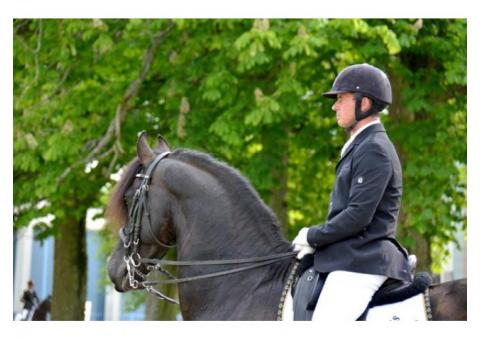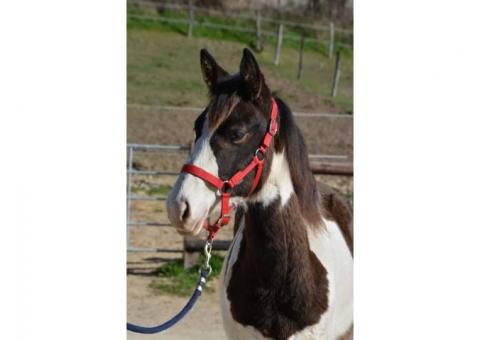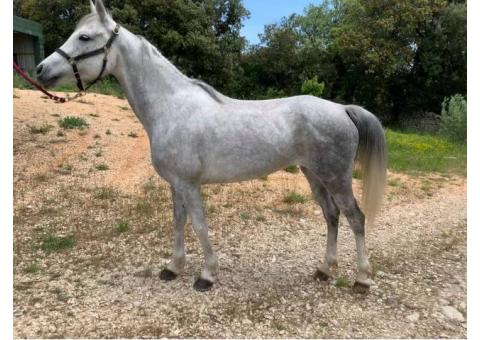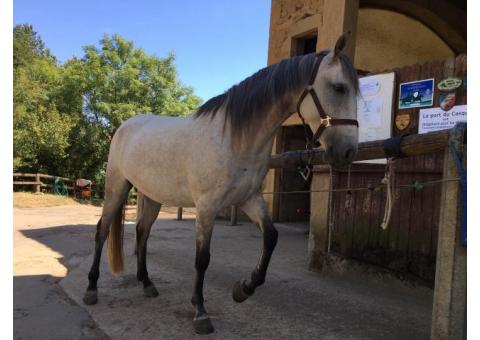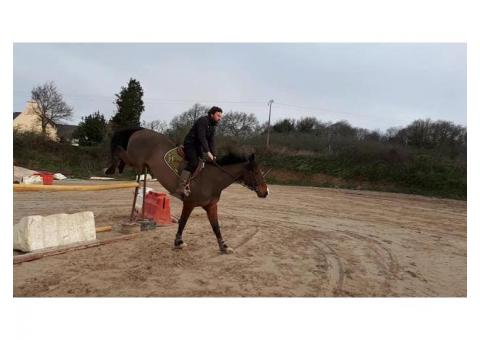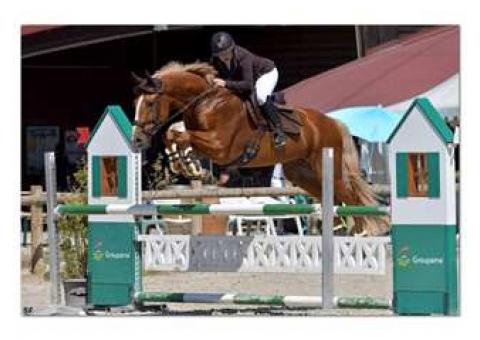Male infanticide, Horses
Sujet commencé par : laureBrrrrr - Il y a 9 réponses à ce sujet, dernière réponse par TopazetcharlotPar laureBrrrrr : le 19/04/12 à 10:28:29
| Dire merci | Bon un poste "informatif", au souvenir d'une video d'un poulain piétiné par un étalon, qui avait fait parler ici a une époque, je suis tombé la dessus ! Male infanticide and paternity analyses in a socially natural herd of Przewalski's horses: Sexual selection? C. Feha, Corresponding author contact information, E-mail the corresponding author, B. Munkhtuyab Abstract The sexual selection hypothesis explains infanticide by males in many mammals. In our 11-year study, we investigated this hypothesis in a herd of Przewalski's horses where we had witnessed infanticidal attacks. Infanticide was highly conditional and not simply linked to takeovers. Attacks occurred in only five of 39 cases following a takeover, and DNA paternity revealed that, although infanticidal stallions were not the genetic fathers in four cases out of five, stallions present at birth did not significantly attempt to kill unrelated foals. Infanticide did not reduce birth intervals; only in one case out of five was the infanticidal stallion, the father of the next foal; mothers whose foals were attacked subsequently avoided associating with infanticidal stallions. Therefore, evidence for the sexual selection hypothesis was weak. The “human disturbance” hypothesis received some support, as only zoo bred stallions which grew up in unnatural social groups attacked foals of mares which were pregnant during takeovers. |
Messages 1 à 9, Page : 1
Par laureBrrrrr : le 19/04/12 à 10:29:03
| Dire merci | 1. Introduction Observations on many species show that some males, after taking over a female group, kill vulnerable infants dependent on their mothers. The sexual selection hypothesis received strong support to explain infanticide by mammalian males, mainly in primates, carnivores and rodents (Van Schaik, 2000a). The overall assumption states that infanticidal males produce offspring at a faster rate than non-infanticidal males. Therefore, if male infanticide is adaptive, the following conditions should be fulfilled (Hausfater and Hrdy, 1984). 1. The probability that the infanticidal male had sired the attacked infants was zero or close to zero. 2. The mother can be impregnated earlier than if the infant had lived. 3. The infanticidal male has an increased probability of siring the next infants relative to the current offspring. The seven extant Equids should be at a low risk regarding infanticide. In contrast to typical species where infanticide is of high prevalence (Van Schaik, 2000a), foals are precocious, mares only give birth to one offspring at a time, show post partum oestrous and, in the mean, gestation time (11 months in horses) generally lasts longer than mean lactation time (8 months in horses). Despite being classified as low risk species, male infanticides in relation to takeovers have been reported in Plains zebras ( [Pluhacek and Bartos, 2000], [Pluhacek and Bartos, 2005] and [Pluhacek et al., 2006]), Mountain zebras (Penzhorn, 1984), Przewalski's horses ( [Ryder and Massena, 1988], [Zarkikh, 1999], [Kolter and Zimmermann, 1988] and [Boyd, 1991]) and Camargue horses (Duncan, 1982), although all actual observations of stallions killing foals were based on studies with human induced experimental male replacement. Some authors tended cautiously towards favouring the classical sexual selection hypothesis ( [Duncan, 1982], [Pluhacek and Bartos, 2000] and [Ryder and Massena, 1988]), while others did not ( [Kolter and Zimmermann, 1988] and [Zarkikh, 1999]). Infanticide has never been witnessed in studies on natural freeliving populations of equids ( [Berger, 1983], [Duncan, 1982] and [Feist and McCullough, 1976]), despite the considerable length and intensity of the observational studies. |
Par laureBrrrrr : le 19/04/12 à 10:29:09
| Dire merci | In this study, we first investigated whether infanticide in stallions was linked to takeovers, a first prerogative, and under what conditions. Indeed, as has been shown in experimental studies on rodents, infanticide rates can be highly conditional. Both mating with the future mother and familiarity during gestation, which are thought to enhance paternity probability, reduce infanticide rates regardless of genetic paternity ( [Huck et al., 1982], [Perrigo and Cully Bryant, 1990] and [Elwood, 1980]). Therefore, we studied links between infanticide and the stallions’ presence at time of conception, their presence during gestation in general and the gestational stage of the mother. We then tested whether males preferentially attacked unrelated foals, whether the interbirth interval was reduced following infanticide, and whether infanticidal males were the genetic fathers of the foals to be born to the mother of the attacked foals. Furthermore, we examined the two, somehow contradictory, female defence strategies mentioned in the literature with regard to the influence of male infanticide on mammalian social systems. Do mares whose foals suffered infanticidal attacks subsequently associate with the infanticidal male in an exclusive one-male unit, such as suggested for mountain gorillas and other species (Watts, 1989)? Or do they engage in multi-male matings as a consequence to infanticide, as suggested by many authors (Wolff and MacDonald, 2004)? Finally, we discuss alternatives to the sexual selection theory for infanticide by males, such as the “social pathology” hypothesis. Although the sample size of infanticidal behaviour in our study is low, this is the case in most studies on the subject. For example, Van Schaik (2000b) synthesis of this type of behaviour in primates is based on 55 observed cases from 17 species. Moreover, if infanticide brings an evolutionary advantage to males killing unrelated offspring after takeovers of females, situations where infanticide occurs after male takeovers should be compared to situations where this behaviour does not occur, and the reproductive success of males committing infanticide should be compared to that of non-infanticidal males. To our knowledge, this is the first study on a socially natural mammalian population which investigates these aspects of infanticide. |
Par laureBrrrrr : le 19/04/12 à 10:29:56
| Dire merci | (je passe sur la méthodo et le résultats pure) 4. Discussion Infanticide by males in this herd of Przewalski's horses was highly conditional and not simply linked to takeovers. Attacks on foals were significantly reduced only when stallions associated with the future mother at the time of conception, exclusively or not, and during the high hormone gestation period, whether the stallion was the genetic father or not. Although most infanticidal behaviour was directed against unrelated foals, 74 % of unrelated foals (26 cases out of 35) were not attacked following takeovers by the stallions present at birth. Mothers were not fertilized earlier after infanticides, and the infanticidal stallion was the father of the next foal in one case out of five only. Moreover, mothers whose foals had been attacked avoided associating with the infanticidal stallion in the years after. Therefore, the evidence in support of the classical sexual selection hypothesis was weak at most. Van Schaik (2000a) summarizes the other hypotheses that were suggested as explanations for infanticide by males, four of which can be excluded for evident reasons. We eliminate the “exploitation” hypothesis, as cannibalism obviously never occurred, as well as the “resource competition” hypothesis; in this study, population density and therefore grazing competition increased, while infanticide decreased (Fig. 2). We rule out the “elimination of future rivals”, as two out of the five attacked foals were females, an observation confirmed by other studies on equids ( [Duncan, 1982], [Pluhacek and Bartos, 2000] and [Zarkikh, 1999]). Infanticide as a “by-product of male aggression” mainly aimed at females can be rejected. The attacks we observed were without doubt directed towards the foals, not their mothers. The “social pathology” hypothesis states that infanticide is either linked to crowding or to human disturbance. As mentioned above, population density in our herd increased nearly threefold while infanticide disappeared after the first 6 years. However, only zoo bred stallions committed infanticide. Interestingly, all witnessed records of male infanticide in equids concern stallions which have not grown up in socially natural herds, the main difference being that male foals born into a group are separated at a relatively early age from their father and sometimes their mother, before acting as reproductive stallions. Moreover, in all cases of witnessed infanticides, the reproductive partner of the infanticidal stallion, a pregnant mare, was always imposed by humans ( [Pluhacek and Bartos, 2000], [Ryder and Massena, 1988], [Kolter and Zimmermann, 1988], [Zarkikh, 1999] and [Duncan, 1982]). Infanticide by males in equids therefore seems clearly to contain an element of human “disturbance” or intervention, even if it may have gone unobserved in some populations due to its rarity. |
Par laureBrrrrr : le 19/04/12 à 10:30:24
Par swann : le 19/04/12 à 11:49:58
 Déconnecté Déconnecté | traduction?   |
Par laureBrrrrr : le 19/04/12 à 11:57:37
| Dire merci |  alors la t'en demandes beaucoup, l'anglais je comprend mais je suis nulle pour traduire y'a une bonne ame qui se débrouille dans l'exercice ?  |
Par NokotaRanch : le 19/04/12 à 12:03:24
 Déconnecté Déconnecté | En gros on pensait que les étalons tuaient les poulains qui n'étaient pas de leur sang, et l'étude montre qu'en fait c'est un comportement qui semblerait plus du au passé d'animal de zoo des animaux relâchés, et qui disparaît progressivement. |
Par dragonelly : le 19/04/12 à 18:37:50
| Dire merci | Merci Nokota, c'est plutôt rassurant ! Mon copain est Anglais, je lui demanderais de décortiquer l'article également. |
Par Topazetcharlot : le 19/04/12 à 19:26:29
| Dire merci | ça serait sympa que tu nous en fasses part. Il suffit d'un mot compris de travers pour inverser totalement le sens d'une phrase. Message édité le 19/04/12 à 19:29 |
Page : 1
Pour préserver la qualité de ce forum, vous devez être membre pour participer à cette discussion..
Il y a actuellement (69 180) membres dans la communauté.
Devenez membre | Connectez vous





